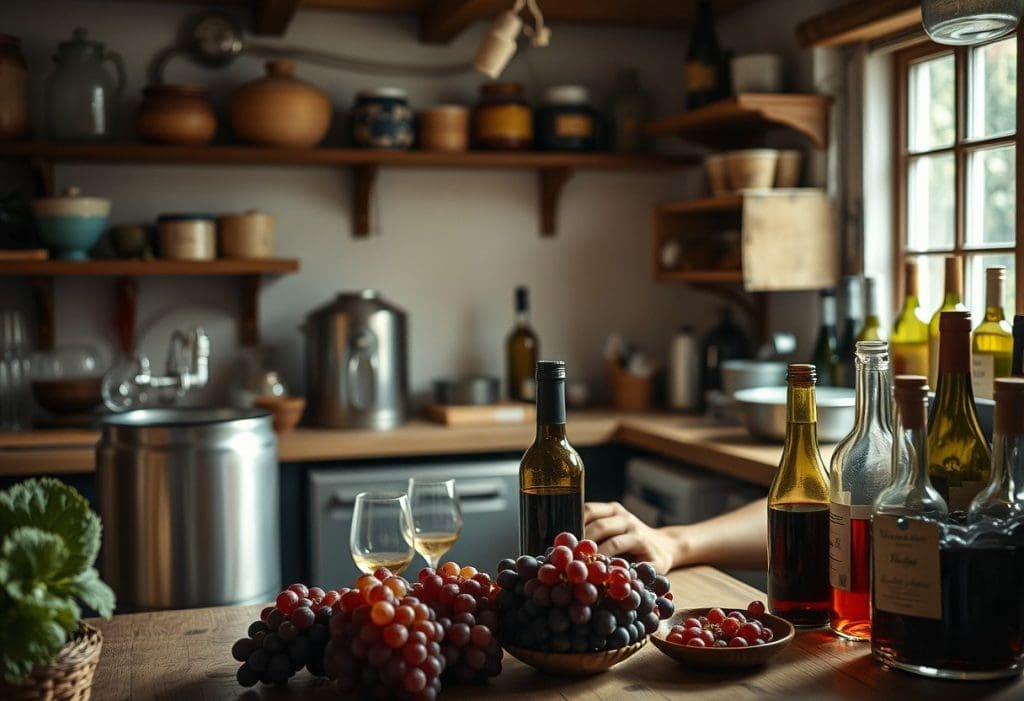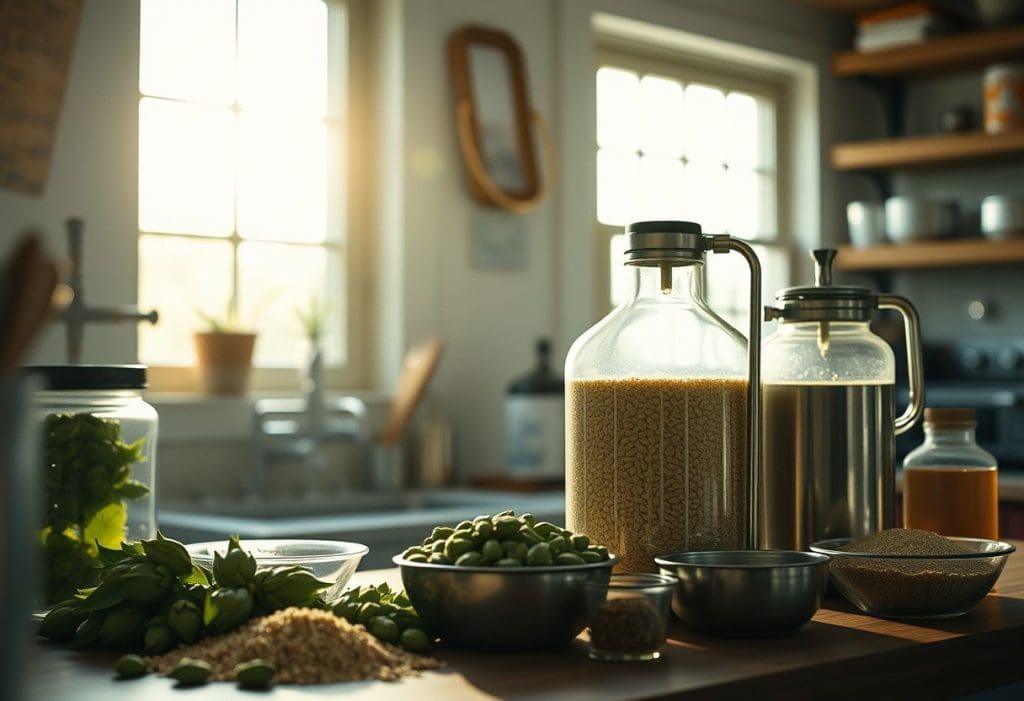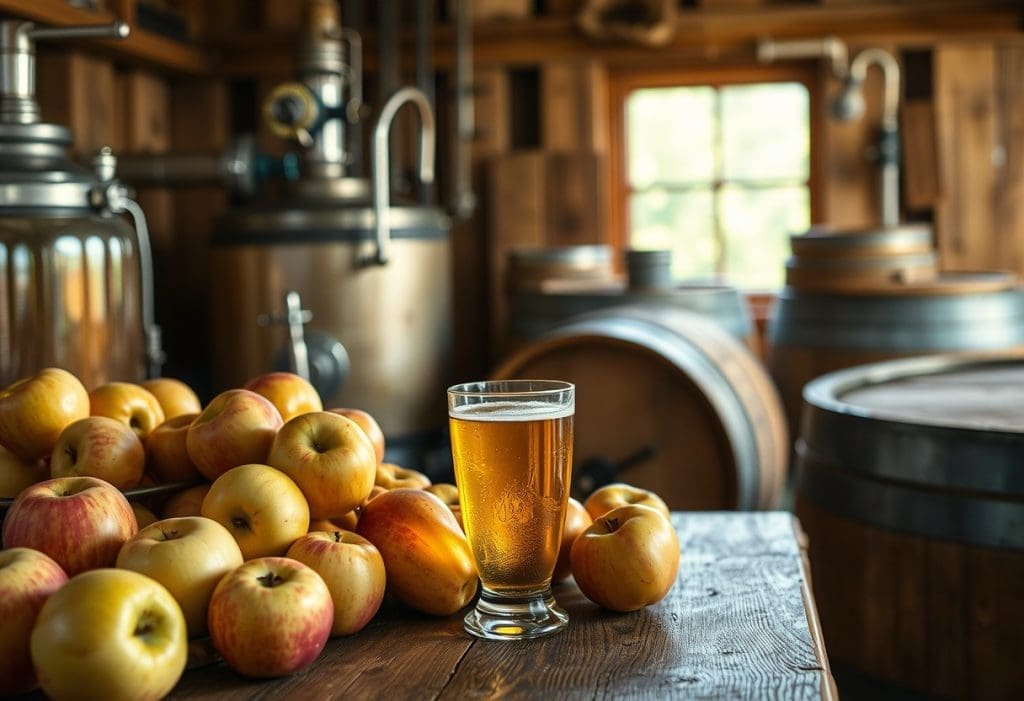Wine enthusiasts often dream of crafting their very own bottles, and making homemade wine can be a fun and rewarding experience.
In this guide, you’ll discover easy steps to turn your favorite fruits into delicious wine, all from the comfort of your home.
Whether you’re a curious beginner or simply looking to impress your friends, you’ll be surprised at how easy it is to get started with winemaking.
Let’s begin on this delightful journey together and unlock the secrets to creating your very own vintage!
Choosing Your Ingredients
Your choice of ingredients is fundamental to craft the perfect homemade wine. Start with fresh and high-quality fruits, as their natural flavors will greatly influence the outcome of your wine.
Additionally, don’t forget to select the right type of yeast, which can significantly impact fermentation and flavor development. With the proper ingredients, you’ll be on your way to creating a delicious and personalized wine experience.
Selecting the Right Fruits
The best fruits for your wine-making adventure should be ripe, flavorful, and suited to your taste preferences.
Look for local varieties that are in season, as they will yield the most vibrant flavors.
Considering the balance of sweetness and acidity in fruits will also enhance the overall quality of your wine.
Understanding Wine Yeast
Different types of wine yeast play a significant role in the fermentation process, influencing both the flavor and aroma of your homemade wine.
Specific strains can enhance or alter the final product’s characteristics and stability, so select a yeast that complements your chosen fruits.
With options ranging from wild yeast to cultivated strains, you have the flexibility to craft the wine that best represents your vision. I highly recommend that you research a bit more about yeast varieties to make an informed decision that aligns with your flavor expectations.
Each choice you make regarding wine yeast will affect the end result, so consider experimenting with different types to see what you prefer.
In addition to thorough research, even conduct small trials to compare how various yeast strains perform with your selected fruits.
The Winemaking Process
Before getting started, it’s important for you to clearly understand all of the winemaking process, which includes several key steps:
- Crushing and pressing the fruit
- Fermentation
- Aging the wine
Each of these stages can greatly influence how the flavors and aroma develop for your homemade wine of choice.
As you explore into this fascinating craft, you’ll learn how to manipulate these stages to create the perfect blend for your taste.
Crushing and Pressing
Once you master crushing and pressing, you can effectively extract juice from your chosen fruits. This step influences the characteristics of the wine you will create.
You may choose to stomp the grapes by foot, use a traditional wine press, or even a modern juicer, each impacting the line’s texture and flavor profile.
Fermentation
Any winemaker will tell you that fermentation is where the magic happens! This process involves converting the sugars in your juice into alcohol.
To get this part right, you’ll have to monitor temperature and oversee the duration of fermentation with precision.
To ensure your wine develops the best flavor, keep an eye on airlocks or look for bubbles. Of course, as we mentioned previously, your choice of yeast strain can significantly affect your wine’s taste as well.
Any variations in temperature, yeast choice, and fermentation length can make a huge difference in the final product. For instance, cooler temperatures tend to result in fresher and fruitier wines, while warmer ferments lead to bolder flavors.
In addition, you might want to consider how long to ferment your wine, as this can influence the overall complexity of the flavors.
Longer fermentation times can lead to deeper aromas, while shorter ones may preserve a fruitier profile. Keep experimenting until you find what you love best!
Bottling Your Wine
Now that you’ve crafted your wine, it’s time to bottle it properly to maintain its flavor and quality.
This process is exciting as you’ll see your handiwork housed beautifully in bottles, but it also requires attention to detail.
To avoid spoilage, you will have to be 100% dedicated to ensuring cleanliness through the bottling effort. Follow each step carefully to ensure your wine is ready for enjoyment when you’re ready to pop the cork.
Equipment and Supplies
You’ll need equipment like glass bottles, corks, and sanitation supplies. This includes a corker, a siphon tube, and a cleaning solution to keep everything spotless.
Make sure to choose high-quality bottles and corks (this can affect the aging potential of your wine). You want the best for your homemade creation!
Techniques for Bottling
You’ll need to approach bottling carefully, lest you open yourself up to risk of oxidation and spoilage. No one wants to pop open a bottle only to find it has turned and is undrinkable!
Use a siphon to transfer your wine to bottles, leaving a bit of space at the top, and insert corks securely to create a seal.
By doing this, your wine will age properly and taste wonderful when you’re ready to serve it.
Be sure to use a corking method that feels the most comfortable for you, or pick up a corker in advance to make the whole process easier.
This will help maintain the integrity of your wine beautifully.
Supplies like a sanitized funnel can also aid in preventing spills during the bottling process.
Before you start, take a moment to prepare, ensuring that each item is clean and your workspace is organized.
This preparation will not only enhance the efficiency of your bottling but will also make the entire process more enjoyable. Cheers to your winemaking adventure!
Aging Your Wine
All great wines have one thing in common: they benefit from aging. This process allows the flavors to meld and mature, creating a richer, more complex taste.
To achieve the best results, aim for a consistent temperature of around 55°F and moderate humidity in your aging space.
Keep your bottles laid down to prevent the cork from drying out, and store them away from light and vibrations.
By crafting the perfect environment, you can make your homemade wine into something truly special, ensuring that every sip brings you joy and satisfaction.
To wrap up
Summing up, making homemade wine can be a fun and rewarding experience!
With the right ingredients, equipment, and a bit of patience, you can create unique flavors that reflect your personal taste.
Don’t hesitate to experiment and let your creativity shine.
Enjoy the journey of winemaking, and share your delightful creations with friends and family.
Cheers to your new adventure in crafting homemade wine!



